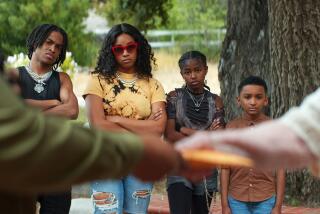Who’s minding the kids?
A beautiful co-ed and her friend take a baby-sitting job at a creepy old mansion only to discover that there is no baby and that they have become trapped in a house . . . of . . . terror.
This synopsis from the upcoming horror flick “The House of the Devil” is a classic example of the cinematic portrayal of the baby sitter as naive. Other stock characters are the sexy Lolita (Alicia Silverstone in 1995’s “The Babysitter”) and the psycho-nanny (Rebecca De Mornay in “The Hand That Rocks the Cradle”).
Why and how the baby sitter rose to pop culture prominence is one of the topics explored by Miriam Forman-Brunell in her book “Babysitter: An American History.”
“I wanted to expose the underlying fear and fantasies that many adults share about teenage girls,” she said in an interview.
And, as Forman-Brunell writes, although the basic job description has remained the same, its work requirements have evolved over the decades. In the not-so-distant past, background checks and CPR training weren’t de rigueur; a friendly and willing neighborhood teenager would suffice.
A history professor at the University of Missouri-Kansas City, Forman-Brunell got the idea for “Babysitter” while working on a dissertation about girls and dolls. She discovered that in the early 1900s, girls would work as “babywalkers” to earn money to buy imported dolls, and she was struck by how savvy they were.
Her book examines the occupation by decades, factoring in economic and demographic cycles such as feminism and wartime workforce needs. In the 1950s, there were great fears that bobby-soxers were having raucous parties, endlessly chatting on the phone and engaging in transgressive activities while Junior was choking in the other room.
“We place a high expectation on teenagers who are self-absorbed by nature,” said Forman-Brunell of the societal taken-for-granteds with whom we leave our precious children.
--
More to Read
Sign up for our Book Club newsletter
Get the latest news, events and more from the Los Angeles Times Book Club, and help us get L.A. reading and talking.
You may occasionally receive promotional content from the Los Angeles Times.






